Fresh lemons are a delightful addition to drinks, recipes, and desserts, adding vibrant flavor and a boost of vitamin C. Growing lemons indoors offers the unique advantage of having fresh citrus year-round, even if you live in a city apartment or an area with cold winters. While lemon trees are traditionally grown outdoors in warm climates, container gardening makes it possible to cultivate these fragrant, fruit-bearing trees indoors. This guide will walk you through everything you need to know to grow healthy lemon trees indoors and enjoy fresh citrus anytime.
Understanding Indoor Lemon Growth
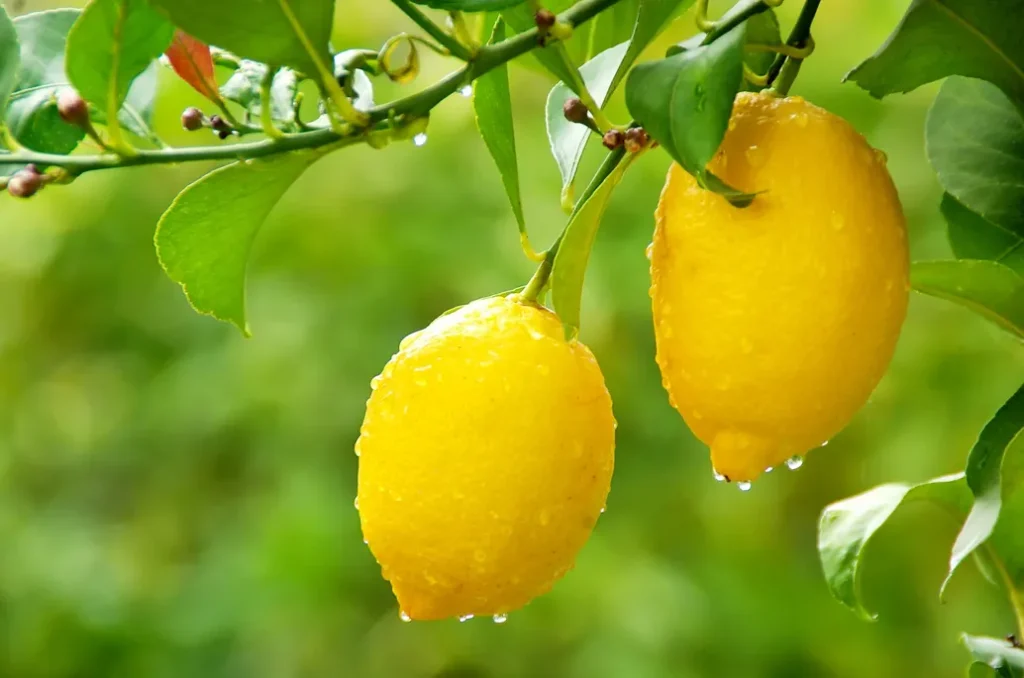
Lemon trees (Citrus limon) are evergreen and thrive in warm, sunny conditions. When grown indoors, they require careful attention to light, soil, water, temperature, and pruning. Choosing the right variety and providing proper care ensures your lemon tree remains healthy, blooms, and produces fruit over the long term.
Ideal Indoor Lemon Varieties
Not all lemon trees are suitable for indoor cultivation. Compact or dwarf varieties are best because they remain manageable in pots and adapt well to container conditions:
- Meyer Lemon: The most popular indoor lemon variety. Compact, highly productive, and less acidic than traditional lemons.
- Improved Lisbon Lemon: Slightly larger but productive, suitable for large indoor spaces.
- Ponderosa Lemon: Produces large fruits, but requires a bigger container and careful pruning.
Choosing the right variety is the first step to successful indoor lemon cultivation.
1. Choosing the Right Container and Soil
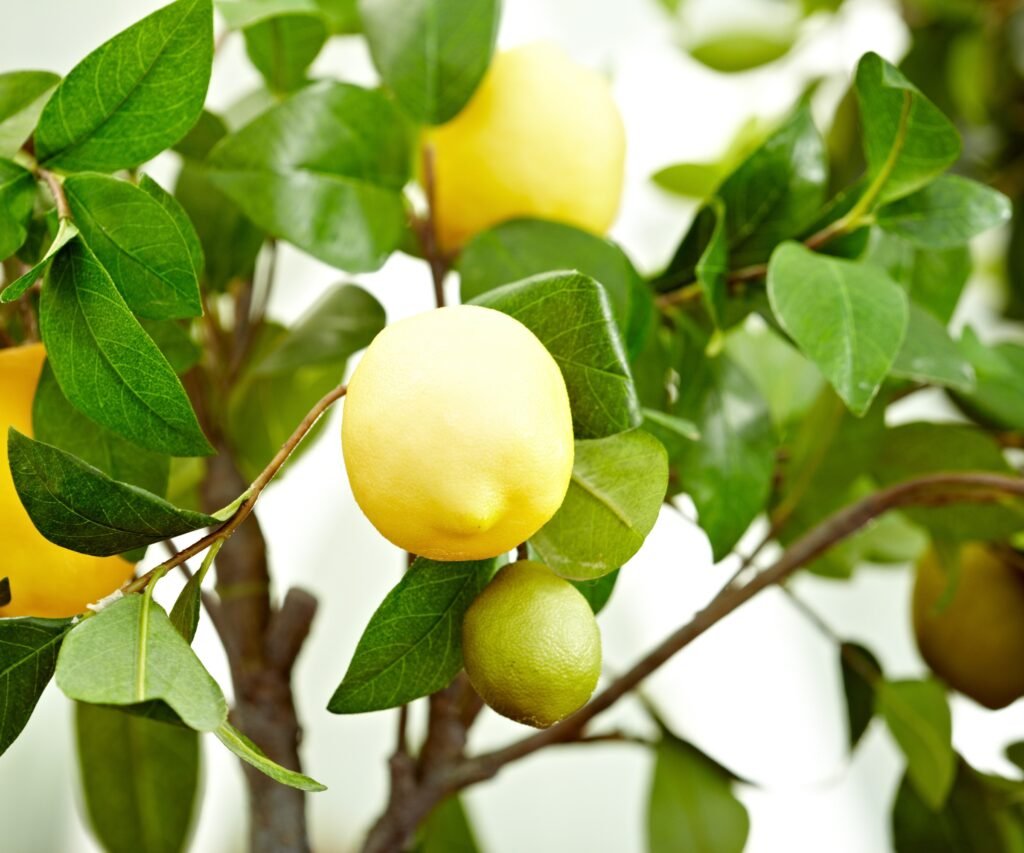
The container and soil directly impact root growth, nutrient availability, and overall plant health.
Container Selection
- Size: Start with a 10–12 inch pot for young trees. Mature trees need 15–20 inch pots or larger.
- Material: Plastic or ceramic pots work well; ensure the container has drainage holes.
- Mobility: Consider pots with wheels or lightweight materials for easy repositioning.
Soil Requirements
- Well-Draining Soil: Citrus trees dislike soggy soil. A mix of high-quality potting soil, sand, and perlite works best.
- pH Level: Slightly acidic soil (pH 5.5–6.5) encourages nutrient uptake.
- Organic Matter: Adding compost or aged manure enhances growth and flowering.
Proper container and soil selection provide a strong foundation for healthy indoor lemons.
2. Providing Adequate Light
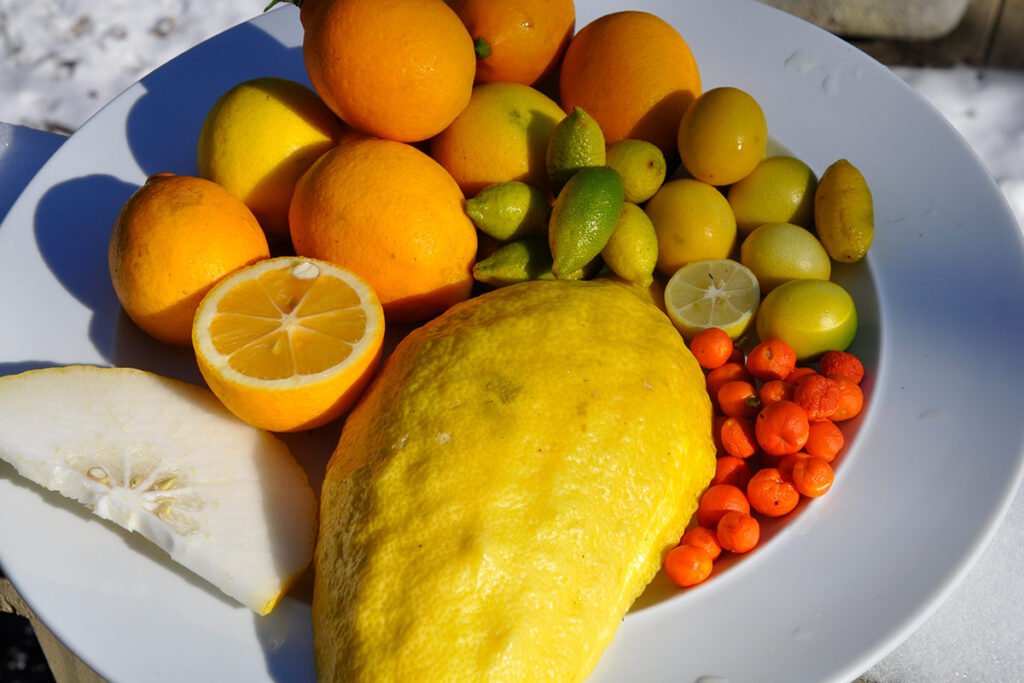
Light is essential for photosynthesis, flowering, and fruit production. Lemon trees need 8–12 hours of bright light daily.
Indoor Lighting Options
- Natural Sunlight: Place the tree near a south-facing window. Rotate the pot every few weeks to ensure even growth.
- Supplemental Lighting: Use LED grow lights or fluorescent lights to compensate for limited sunlight during winter.
- Light Intensity: Ensure the leaves receive bright, indirect sunlight to prevent scorching.
Adequate light is key to encouraging flowers and fruit, which are essential for a year-round harvest.
3. Watering and Humidity
Watering is critical for lemon trees grown indoors, as both overwatering and underwatering can stress the plant.
Watering Tips
- Frequency: Water when the top 1–2 inches of soil are dry. Adjust frequency based on pot size, indoor temperature, and humidity.
- Method: Water deeply, allowing excess to drain through the bottom. Avoid letting the pot sit in standing water.
- Signs of Stress: Yellow leaves indicate overwatering; dry, curled leaves indicate underwatering.
Humidity Management
- Ideal Humidity: 40–50% is optimal. Indoor heating in winter can dry the air, so use a humidity tray or humidifier if needed.
- Misting: Occasional misting of the foliage can help replicate the tree’s natural subtropical environment.
Consistent moisture and proper humidity promote healthy foliage and fruit development.
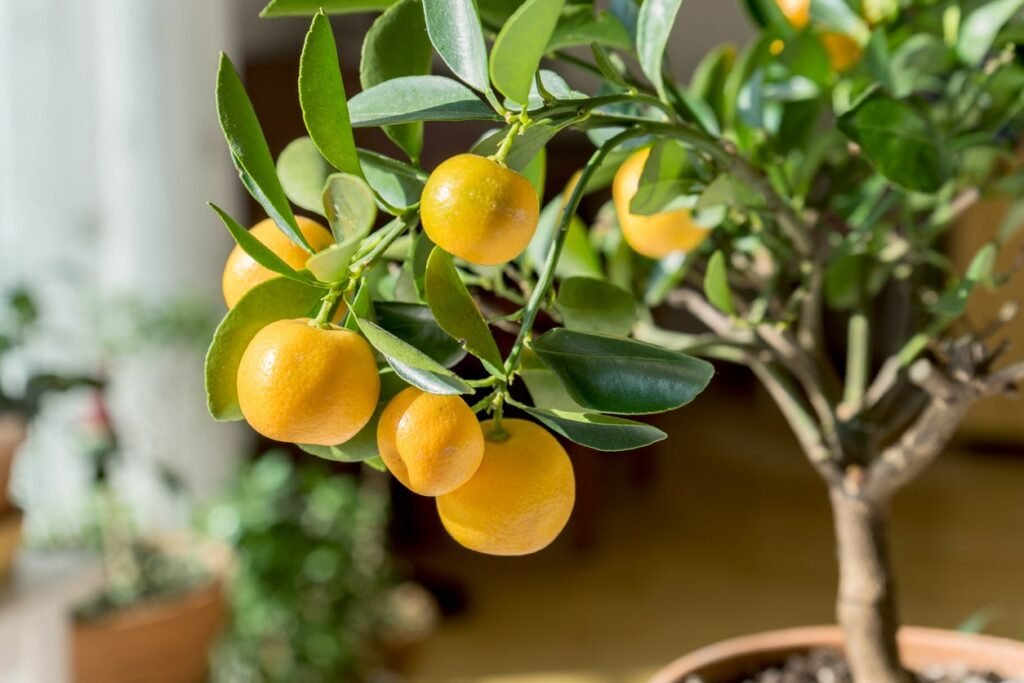
4. Fertilizing Indoor Lemons
Lemon trees are nutrient-hungry, especially when grown in containers. Regular fertilization is crucial for vigorous growth, abundant flowers, and healthy fruit.
Fertilizer Guidelines
- Type: Use a citrus-specific fertilizer high in nitrogen, phosphorus, and potassium (NPK). Trace elements like magnesium, iron, and zinc are also important.
- Frequency: Fertilize every 6–8 weeks during the growing season (spring through summer). Reduce frequency in fall and winter.
- Method: Follow package instructions and water the tree after fertilizing to prevent root burn.
Proper fertilization ensures your lemon tree remains lush, productive, and vibrant year-round.
5. Pruning and Maintenance
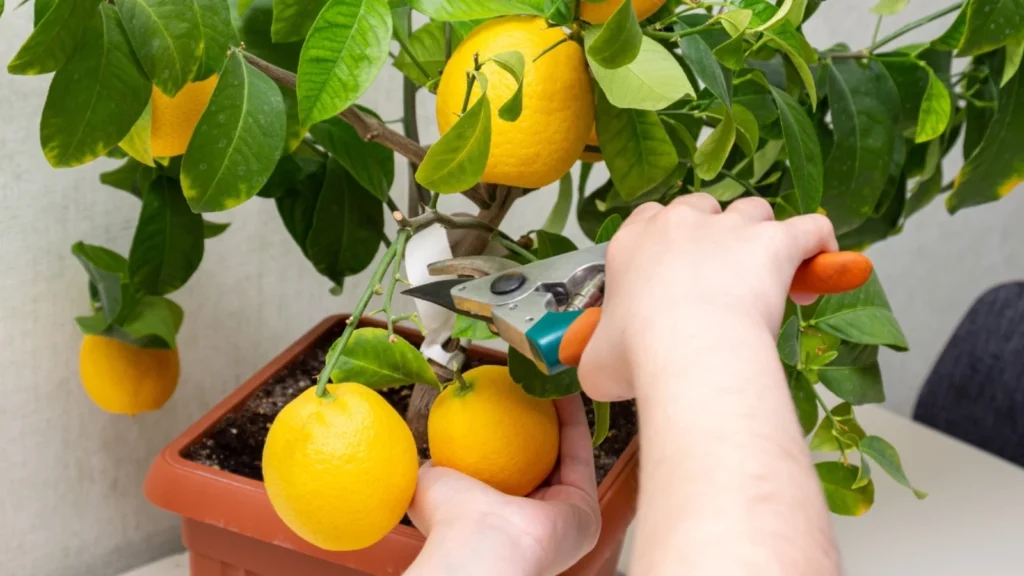
Pruning encourages healthy growth, improves air circulation, and maintains a manageable size for indoor spaces.
Pruning Tips
- Shape Maintenance: Remove leggy growth to encourage a bushier form.
- Flower and Fruit Pruning: Trim spent flowers and any damaged or dead branches to improve overall health.
- Timing: Light pruning can be done throughout the year, but major pruning is best in early spring before new growth begins.
Regular pruning not only keeps the tree attractive but also maximizes fruit production.
6. Pollination for Indoor Trees
Unlike outdoor trees, indoor lemon trees may need assistance with pollination because of the lack of natural pollinators like bees.
How to Pollinate Indoors
- Hand Pollination: Use a small paintbrush, cotton swab, or even a toothbrush to transfer pollen between flowers.
- Shake Method: Gently shaking branches or tapping flowers can also encourage pollen movement.
- Multiple Trees: If space allows, having two trees can enhance cross-pollination.
Effective pollination is essential to ensure fruit sets successfully on indoor lemon trees.
7. Pest and Disease Management
Indoor lemon trees are generally less prone to pests than outdoor trees but can still face challenges.
Common Pests
- Aphids: Small insects that feed on new leaves and flower buds.
- Spider Mites: Tiny, web-forming pests that thrive in dry indoor air.
- Scale Insects: Appear as small bumps on stems and leaves.
Disease Prevention
- Root Rot: Avoid waterlogged soil to prevent fungal infections.
- Leaf Spot: Ensure good air circulation and avoid wetting foliage excessively.
Regular inspection, proper watering, and organic pest control methods help maintain healthy indoor lemon trees.
8. Harvesting Lemons Indoors
Knowing when and how to harvest ensures maximum flavor and promotes ongoing production.
Harvesting Guidelines
- Timing: Lemons are ready to harvest when they are fully yellow (or yellow-green in some varieties) and slightly soft to the touch.
- Method: Use scissors or pruning shears to cut the fruit, leaving a small stem attached to prevent damage to the tree.
- Continuous Harvest: Regularly harvesting mature fruit encourages the tree to produce more flowers and fruits.
With proper care, indoor lemon trees can provide fresh citrus year-round, transforming your indoor space into a fragrant and productive oasis.
Tips for Year-Round Indoor Lemon Success
- Rotate Your Tree: Periodically rotate the pot to ensure even sunlight exposure on all sides.
- Maintain Warm Temperatures: Keep daytime temperatures between 65–75°F (18–24°C) and avoid drafts.
- Use Companion Plants: Herbs like basil or mint nearby can improve airflow and pest resistance.
- Supplement Light in Winter: LED grow lights can help maintain flowering and fruiting during short winter days.
- Monitor Plant Health: Regularly inspect leaves, flowers, and stems for signs of stress, nutrient deficiency, or pests.
By combining these strategies, indoor lemon trees can thrive, providing a reliable source of fresh, flavorful citrus all year.
Conclusion
Growing lemons indoors is both an enjoyable and practical endeavor. With careful attention to light, water, soil, nutrition, and pollination, you can cultivate healthy, fruit-bearing trees even in small urban spaces. Lemon trees offer not only fresh, zesty fruits but also a fragrant, visually appealing addition to your home. By selecting the right variety, providing consistent care, and practicing proper pruning and maintenance, you can enjoy fresh lemons anytime—enhancing your cooking, beverages, and overall lifestyle with the natural goodness of homegrown citrus.
Indoor lemon cultivation transforms your living space into a green, productive oasis, proving that even in urban environments, fresh, flavorful produce is always within reach.
